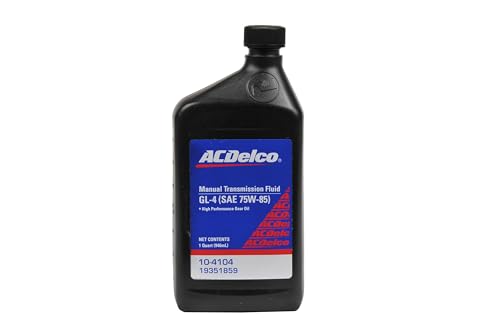Ah, the lifeblood of your Chevrolet Spark’s transmission—its fluid! Imagine diving into a pool of molasses instead of water; you’d feel the difference instantly, wouldn’t you? The same goes for your car.
Key Takeaways:
- Transmission Fluid’s Role: It’s essential for lubrication, cooling, operational function, cleaning, sealing, and overall car performance.
- Chevrolet Spark Generations: The Chevrolet Spark has seen multiple generational shifts, with the 3rd Gen (M300) spanning 2013-2015, the 4th Gen (M400) covering 2016-2018, and the 4th Gen (M400) Facelift from 2019 onwards.
- Fluid Specifications:
- Each generation of the Chevrolet Spark may have slightly different transmission fluid specifications in terms of type and capacity. Manual: 1.9-21 quarts; CVT: 6.1-6.6 quarts.
- Safety and Precision: Whether checking the transmission fluid or changing it, always prioritize safety and accuracy, ensuring the vehicle’s longevity and optimal performance.

The transmission fluid is not just any liquid—it’s a meticulously engineered fluid that ensures every journey you take is smooth, efficient, and hiccup-free.
Just as you wouldn’t fill your coffee machine with orange juice, your car craves the exact transmission fluid it was designed for. The right type and the right amount make all the difference between a car that purrs and one that stutters.
How To Check Transmission Fluid In Chevrolet Spark
Checking the transmission fluid in your Chevrolet Spark is an important part of routine maintenance. Proper transmission fluid levels ensure smooth shifting and can prolong the life of the transmission. Here’s a step-by-step guide on how to check it:
1. Prepare the Vehicle:
- Location: Park your Chevrolet Spark on a level surface. This ensures you get an accurate reading of the transmission fluid level.
- Warm up the Engine: For the most accurate reading, the transmission fluid should be warm. Drive the car around for about 10 minutes or let it idle for a similar amount of time.
2. Locate the Transmission Dipstick (If Equipped):
- Open the car’s hood.
- Look for the transmission dipstick. Note that not all Chevrolet Sparks will have an easily accessible dipstick, especially newer models which might have a sealed transmission. If you can’t locate the dipstick, your model might require a more involved check at a professional service center.
- The dipstick typically has a bright handle, often labeled “Transmission” or with a gear symbol.
3. Check the Fluid:
- Pull out the dipstick, and wipe it clean with a lint-free rag or paper towel.
- Re-insert the dipstick fully, then pull it out again.
- Examine the fluid on the dipstick:
- Color: Fresh transmission fluid is typically red or light brown. If the fluid is dark brown or black and has a burnt smell, it might be time for a fluid change.
- Consistency: The fluid should be smooth, without particles. If you notice small pieces or grit, it may indicate internal wear, necessitating a more thorough inspection.
4. If Necessary, Add Fluid:
- If the level is low, you’ll need to add the specific transmission fluid recommended for your Chevrolet Spark. Use a funnel to avoid spillage.
- Add a bit at a time, checking the level frequently to avoid overfilling.
5. Replace the Dipstick:
- Once you’re done, ensure the dipstick is fully seated back in its tube.
6. Monitor for Leaks:
- Over the following days, monitor your parking spot for any signs of leaks. If you see reddish fluid on the ground, it might indicate a transmission leak that needs immediate attention.
Important Notes:
- Always refer to your vehicle’s owner’s manual for any specific recommendations or warnings related to your particular model.
- If you’re unsure or uncomfortable checking the transmission fluid yourself, consider seeking assistance from a professional mechanic or service center.
- If your Chevrolet Spark doesn’t have a dipstick and you’re experiencing transmission issues or are curious about fluid levels, a visit to a dealership or mechanic is recommended. They will have the tools and expertise to check fluid levels in sealed transmission systems.
2016 2017 2018 2019 2020 2021 2022 2023 Chevrolet Spark Transmission Fluid Capacity and Transmission Fluid Type
For the 4th Gen (M400) Chevrolet Spark it’s always crucial to refer to the specific vehicle’s owner’s manual for the most accurate and up-to-date recommendations.
The total capacity for a full fluid change varies depending on the exact model and whether it’s a manual or automatic transmission.
| Gearbox | Fluid capacity | Fluid type |
|---|---|---|
| 5-speed manual | 1.9 quarts (1.8 liters) | GM 75W-85 MTF |
| CVT7 | Total fill 6.6 quarts (6.2 liters) | GM 10-4092 |
- Recommended replacement part for your GM vehicle’s original factory component
- Offering the quality, reliability, and durability
- Manufactured with GM Original Equipment specification for fit, form, and function
- Country of Origin : United States
- Specific coefficient of friction intended only for CVTs ensures smooth ratio changes without power interruption, enables engine to remain at its maximum power RPM, and provides for consistent, uninterrupted acceleration
- Fluid is colored green (as opposed to traditional red transmission fluids) to provide for simple visual identification of proper fluid for CVT-specific use
- Use of this product assists in guaranteeing the CVT’s advantages in efficiency
Transmission fluid change interval: 45,000 miles (72,000 kilometers).
Remember, using the right transmission fluid is essential for the longevity and optimal performance of the vehicle. Always double-check with the owner’s manual or contact a Chevrolet dealer to ensure you’re using the correct type and amount of fluid.
2013 2014 2015 Chevrolet Spark Transmission Fluid Capacity and Transmission Fluid Type
For the 3rd Gen (M300) Chevrolet Spark (2013 – 2015), here are the general transmission fluid recommendations. As with any vehicle, consulting the specific vehicle’s owner’s manual will provide the most accurate and up-to-date information.
- The fluid capacity for the Chevrolet Spark’s transmission can differ based on several factors including the specific year, model, regional variations, and whether it’s an automatic or manual transmission.
- For automatic transmissions, a rough estimation for a drain and refill might be around 3 to 5 quarts. A full fluid change, which includes the torque converter and other components, might be slightly higher.
- For manual transmissions, the capacity is often less than automatic transmissions but can also vary based on the specific design.
| Gearbox | Fluid capacity | Fluid type |
|---|---|---|
| 5-speed manual | 2.2 quarts (2.1 liters) | GM 75W-85 MTF |
| 4-speed automatic | Total fill: 5 quarts (4.7 liters) Initial fill: 4.8 quarts (4.5 liters) | Dexron VI |
| CVT7 | Total Fill 6.1 quarts (5.8 liters) | GM 10-4092 |
Transmission fluid change interval: 45,000 miles (72,000 kilometers).
Always consult the owner’s manual or contact a Chevrolet dealership to verify the correct specifications for your specific model and trim of the Chevrolet Spark.
Transmission Fluid: Why It’s Important
Dive beneath the surface of any car, and you’ll quickly discover a labyrinth of components all working harmoniously to give you that seamless driving experience. One of the unsung heroes in this automotive orchestra is the transmission fluid.
This essential liquid does far more than just occupy space; it plays a pivotal role in ensuring the car’s transmission system functions optimally.
1. Lubrication:
- The primary role of transmission fluid is to lubricate. Without it, the gears in the transmission would grind against each other, leading to wear and tear, or even complete failure. By providing a slippery barrier, the fluid ensures that the gears can shift smoothly, reducing the risk of premature wear or damage.
2. Cooling:
- Transmissions generate a lot of heat, especially during heavy-duty tasks or high-speed driving. The transmission fluid helps dissipate this heat, preventing the transmission from overheating. Overheating can lead to reduced performance, increased wear, and in extreme cases, failure of components.
3. Transmission Operation:
- Modern automatic transmissions are marvels of engineering, with intricate valve bodies that direct fluid to activate clutches and bands, allowing the transmission to shift gears. Without the correct fluid, or with low fluid levels, these components won’t work as intended, leading to erratic or failed shifting.
4. Protection and Cleaning:
- High-quality transmission fluids contain detergents and other additives that help clean the transmission, preventing deposits from forming. They also have anti-wear additives that protect the transmission’s internal components from wear over time.
5. Sealing:
- The fluid aids in maintaining the seals in the transmission. Without it, or with old, degraded fluid, seals can dry out and crack, leading to leaks. A leak not only means loss of fluid but can also lead to contamination, which can accelerate wear and tear.
6. Enhanced Performance and Fuel Efficiency:
- With the right level and quality of transmission fluid, your car’s transmission operates smoothly. This translates to better overall car performance, smoother gear shifts, and enhanced fuel efficiency since the engine doesn’t have to work harder due to transmission inefficiencies.
Steps to Change Transmission Fluid in Chevrolet Spark
Changing the transmission fluid in your Chevrolet Spark is a straightforward process but requires attention to detail to ensure you don’t inadvertently damage your transmission or introduce contaminants.
Below are steps you can follow:
Steps to Change Transmission Fluid in Chevrolet Spark
1. Preparation:
- Gather Necessary Supplies: This includes the recommended transmission fluid type (usually DEXRON-VI ATF for automatic transmissions in most Sparks), a large drain pan, a funnel, socket set, gloves, and safety goggles.
- Vehicle Positioning: Park the Spark on a level surface. If you need more clearance to work, use a jack to lift the vehicle and secure it with jack stands. Always ensure it’s stable before working underneath.
- Warm-Up: Drive your Chevrolet Spark or let it run for about 10 minutes. Warm fluid drains more thoroughly.
2. Draining Old Fluid:
- Locate the Drain Plug: Get under the car and find the transmission oil pan. It should have a drain plug. Wear your gloves and goggles.
- Drain the Fluid: Position your drain pan beneath the plug. Using the appropriate socket or wrench, slowly unscrew the drain plug, allowing the fluid to flow out. Be cautious; the fluid may be warm.
- Remove the Transmission Pan (optional): For a more thorough change, you can remove the transmission pan entirely after draining to clean it and change the filter. If you choose to do this, be prepared to replace the gasket and have a new filter on hand.
3. Adding New Fluid:
- Replace the Drain Plug: Once drained, clean and replace the drain plug. If you removed the transmission pan, ensure the new filter is in place and reattach the pan using a new gasket. Tighten the drain plug (or pan bolts) to the specification given in your owner’s manual or service manual, but avoid over-tightening.
- Locate the Fill Plug or Dipstick Tube: On many vehicles, you’ll use the transmission dipstick tube to add new fluid. Ensure it’s clean.
- Pour in New Fluid: Using a clean funnel, slowly pour the recommended amount of new transmission fluid into the fill plug or dipstick tube.
4. Checking Levels:
- Start the Engine: With the new fluid added, start your Spark and let it run for a few minutes. Move the gear selector through all gears and then back to ‘Park’ (for automatic transmissions).
- Check the Fluid Level: With the engine still running, pull out the dipstick, wipe it clean, re-insert it, and then pull it out again to check the level. The fluid should be between the “MIN” and “MAX” marks. Add more if necessary.
- Test Drive: Once you’re satisfied, take your Spark for a short test drive, ensuring that it shifts smoothly.
Important Reminders:
- Always use the transmission fluid recommended for your Chevrolet Spark. Using the wrong type can cause transmission damage.
- Ensure the vehicle is stable if elevated. Never work under a car supported only by a jack.
- Regularly check for any signs of leaks in the days following your fluid change.
- When in doubt, consider seeking assistance from a professional mechanic.
Changing the transmission fluid is crucial for the longevity and smooth operation of your car’s transmission. It’s a task that, with the right preparation and care, can be done by many DIY enthusiasts.
Last update on 2025-12-18 / Affiliate links / Images from Amazon Product Advertising API

















